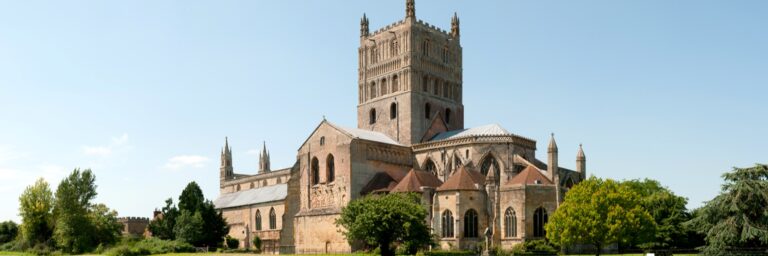| CC4HH
Legacies of slave ownership in Gloucestershire
This year, our students are working on a number of important local history projects covering the hidden lives of prominent women, exploring the experiences of lockdown, and uncovering links with slavery. All the projects will be exhibited in September as part of the ‘City Voices’ programme of the Gloucester History Festival. This post is one of five projects, and explores the legacies of slave ownership in and around Gloucester, and includes Joe Richardson, Harry Scott, Stephen Walmsley.
The Black Lives Matter protests in the summer of 2020 awoke a desire in many to learn more about our past and to question what we see around us. Many people wanted to gain further knowledge of the slave trade, a topic often brushed over in school, and many, ourselves included, wanted to know in what ways wealth generated by slavery is still visible. This project provides us with the opportunity to explore these questions in a case study of Gloucestershire. We aim to explore some of the legacies of the slave trade that are still visible in Gloucester and Gloucestershire.
Initially, we investigated how the abolition of slavery came about in Britain and its empire. There were two key pieces of legislation. First, the 1807 Abolition of the Slave Trade Act allowed for the confiscation of all ships involved in the slave trade. The 1807 Act also imposed fines on slave ship masters of £100 per slave if they tried to transport thereafter. Second, the 1834 Abolition Act had two sections: one emancipated the slaves, and the other compensated the slave owners. This act saw over £20,000,000 (over £2.4bn in today’s money) given in compensation to over 3,000 slave owning families. This was around 5% of GDP and 40% of the national budget. The money borrowed to pay this compensation was only paid off in 2015.
Next, we used the University College London (UCL) website Legacies of British slave-ownership to identify the names of known slave owners of Gloucester who received compensation after 1834. We then used a range of archives and digital archives, including the British Newspaper Archive, to explore further the individuals found on the UCL website. We found eleven people in Gloucester, or the villages just outside of the city, who received compensation. Of these eleven, we were able to find some more detailed information in archives and from records kept by local history societies, although this is still an ongoing process.
We found Rev. George Wilson Bridges. Bridges served as a vicar in two parishes in Jamaica and then served as rector as St. Giles Church in Maisemore, a village just outside Gloucester, from 1844-1846. He returned to Gloucestershire as vicar at Beachley from 1858-1863. He received just over £87 in compensation for three slaves, but this was not the main way that Bridges profited from slavery. Bridges earnt an annual income of between £500 and £2000 from baptising slaves whilst he was serving in Jamaica. With this money, he was able to fund a decade of travel around the world developing photography, something for which he is remembered. This example shows two aspects of slavery: first, the way people could indirectly profit from slavery; and second, one of the ways people spent the money they made from it, including pursuing a hobby.
People also invested their wealth. For example, George Henry Ames received over £45,000 in compensation for sixteen slave estates and made significant investments in the Great Western Cotton Company. Henry Sealy received £393 in compensation, and he invested a total of £2,500 in the York and Carlisle railway. Sealy was not the only Gloucestershire slave owner to invest in railways. These examples demonstrate that profit from the slave trade remains ingrained in many aspects of modern life in ways that are extremely easy to miss, such as the development of a railway network.

Another visible aspect of wealth from the slave trade is in the country estates around Gloucestershire. These were the ideal purchase for wealthy slave traders and merchants from Bristol. There were at least ten country estates in Gloucestershire that saw money from slavery invested in them, including one of the most famous in the country: Badminton House. Badminton benefitted from a £20,000 refurbishment in late 17th century by its owner, Henry Somerset, who had extraordinarily strong links to the slave trade.
Even though the project is ongoing, the examples listed in this post demonstrate that money from the slave trade can be seen in many aspects of modern life even in areas that one might not expect.



